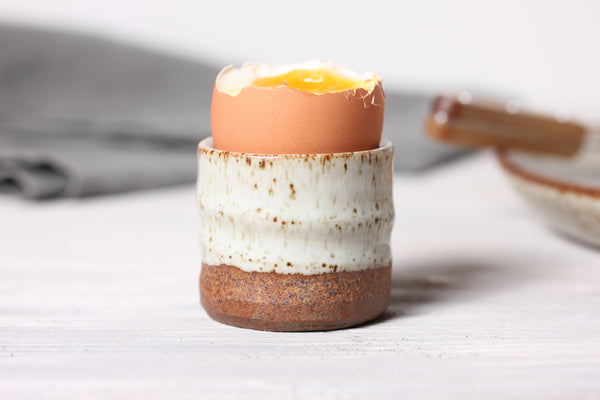I’ve been doing some glaze testing to try and create a glaze I can see in my head. It’s a light blue grey matt glaze with darker speckles. I thought I would investigate the difference glaze opacifiers have at the same time.
The starting point is the base glazes I have been developing recently. Having tested various clays available, I wasn’t happy with the porosity of them when fired to cone 6, so I’ve recently started firing to cone 8.
I use software at glaze simulator.com to develop glazes and also insight live which can be accessed by group membership for from cone6pots.ning.com.
I’m currently testing with two recipes. By changing the China clay and quartz quantities, the silica to alumina ratio can be modified, and therefore change the gloss to matt level.
Cone 8 base gloss glaze recipe
Wollastonite 15
Bps calcium Borate frit 10
China clay 15
Quartz 25
Bps soda feldspar 35
Silica to alumina ratio 8.71
Cone 8 base matt glaze recipe
Wollastonite 15
Bps calcium Borate frit 10
China clay 25
Quartz 15
Bps soda feldspar 35
Silica to alumina ratio 6.27
The matt glaze recipe has been used in the following tests. I decided to compare some glaze opacifiers, the base glaze was made in a small batch and sieved, then weighed into eight 200g test pots. I measured 7% and 10% of each four opacifier into the tests.
The glaze opacifiers weren’t sieved which has resulted in the flaky white bits. The other colourants were added after dipping each test. The tests were done on shards of bisqued bowls I broke up because I hadn’t planned ahead and made proper test tiles. The test number was painted on the back with iron oxide.




From these tests it’s clear that zinc oxide is the weakest opacifier, this could be due to the levels of calcium and boron in the base, or perhaps that it works better as an opacifier at lower temperatures. It is also surprisingly glossy which is evidence of the fluxing qualities of zinc oxide
The tin and zirconium silicate tests look fairly similar, any subtle differences are hard to detect in small tests, and without the glazes being sieved.
The titanium dioxide tests are the creamiest white, and the 10% additions are the closest to the glaze I have been trying to create. The black iron oxide additions are hardly visible, and I plan to do some more tests with larger additions.

